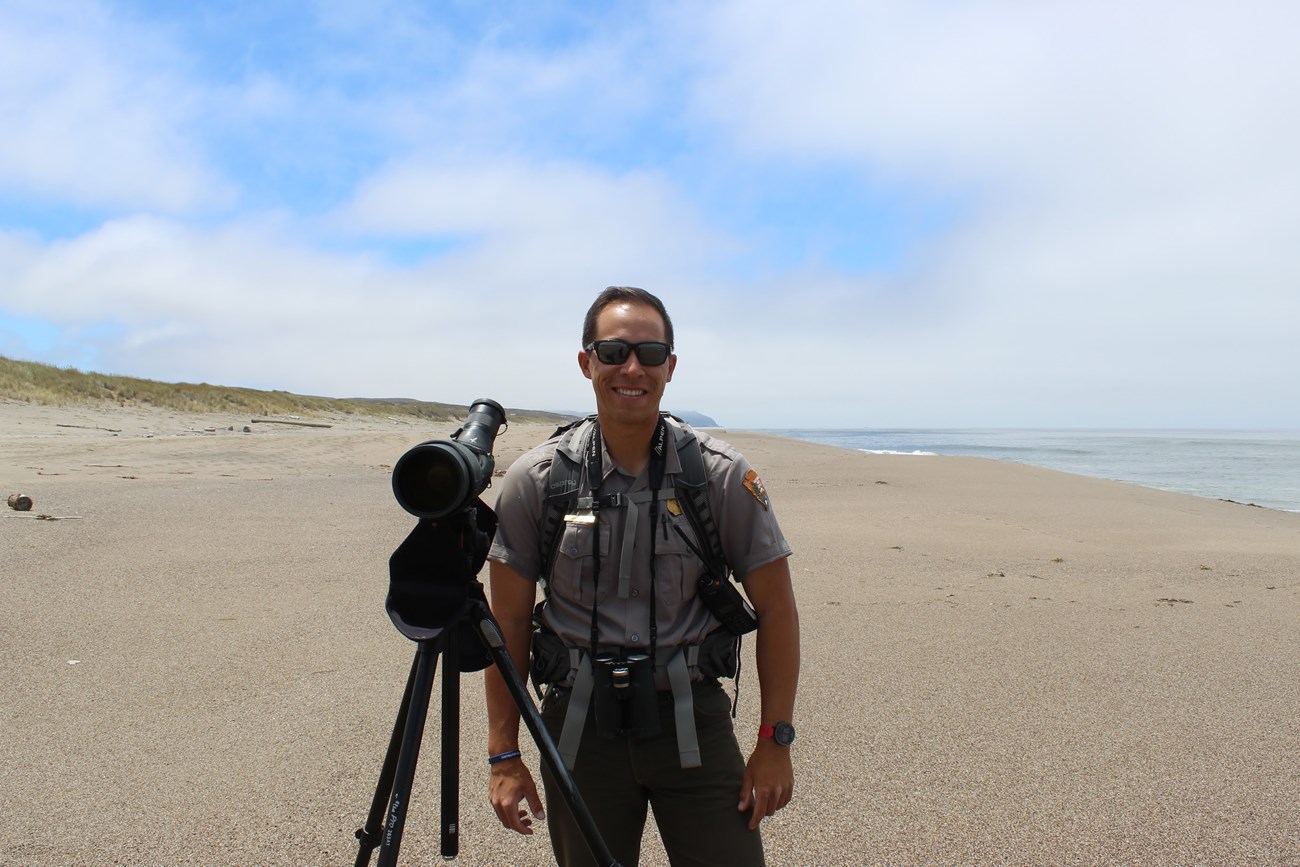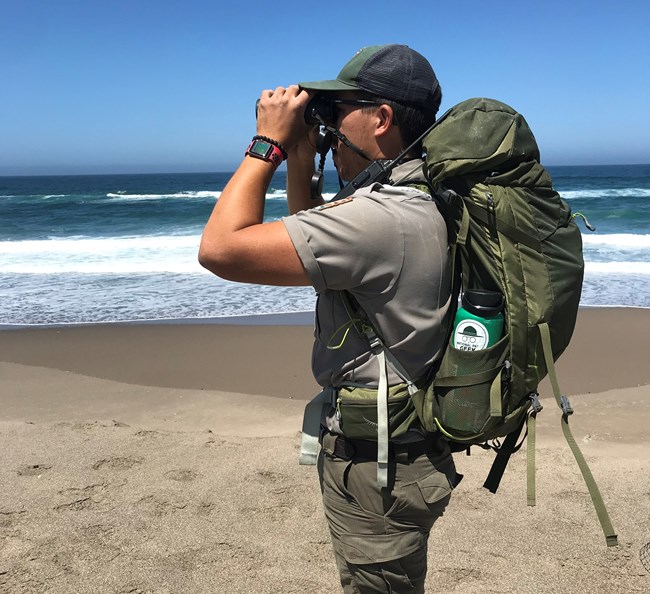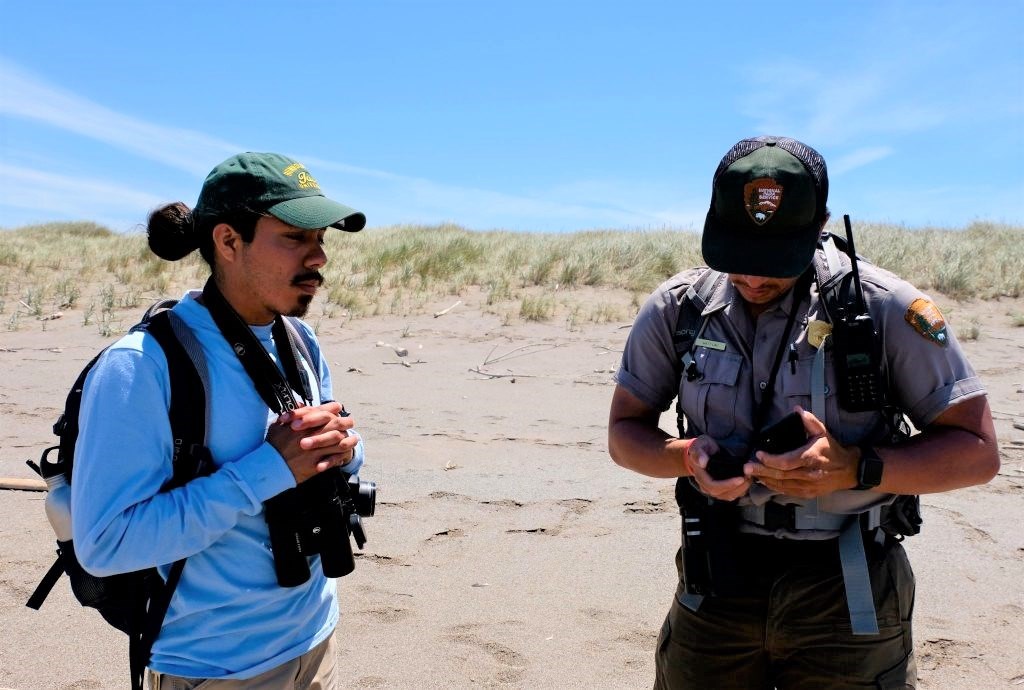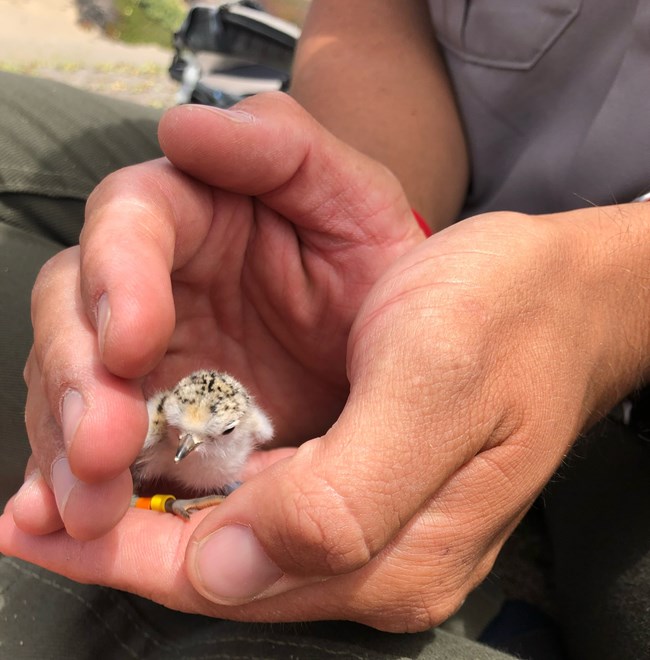Last updated: June 13, 2022
Article
Staff Spotlight: Matthew Lau

Photo courtesy of David Pascoe
How did you find yourself at NPS?
Wearing the ranger uniform and working for NPS had always been a childhood dream. Road trips to various national parks throughout the western U.S. were a frequent vacation choice of my formative years. I looked forward to my family’s nearly annual visits to Yosemite National Park and Redwood National & State Parks. I eventually went off to study wildlife biology and conservation at Humboldt State University (now called Cal Poly Humboldt), earning both my B.S. and master's degree. I focused my research and studies on a federally threatened shorebird species called the western snowy plover. Shortly after graduating, I was working a seasonal position that I was not very enthusiastic about and was surprised to find a job announcement with the NPS in Point Reyes National Seashore, leading the monitoring and management of the western snowy plover program with the Integrated Resources Division. It was a serendipitous find and my way in to the NPS! I was so happy to be working with my focus species while working as an NPS biologist.

Photo courtesy of Gina Graziano
What do you do for the NPS?
I’m a biological science technician at Point Reyes National Seashore in California. My main responsibility is managing the breeding western snowy plover monitoring program for the park, which is part of the Integrated Resources Division as well as the Inventory and Monitoring Division for the San Francisco Bay Area Network. The plover breeding season is between March and September, and during that time I am essentially hiking miles on the beach every day, surveying for individual plovers and monitoring for any nesting activity. Once nests are found, I monitor them, track breeding success, and enact actions to help improve reproductive success (i.e., protecting the nests from predators or putting up fencing to give the nests enough space from visitors and dogs). I also support other wildlife programs in the park: I assist with monitoring for the elusive Point Reyes mountain beaver, an ancient nocturnal rodent that constructs burrow systems in habitat with a lot of poison oak and overstory cover. I also assist the elephant seal monitoring program, where we track breeding success and tag weanling seals; and I help with the northern spotted owl and tule elk programs from time to time.
What do you find most rewarding about your job?
I love having a meaningful impact on conservation and working as a public servant. My work managing breeding snowy plovers rewards me with the feeling that I am contributing to a larger effort in conservation and helping to preserve our natural resources and the environment. I also enjoy connecting visitors with my work and the natural beauty in Point Reyes, while teaching them about conservation and the natural world that surrounds them.

Photo courtesy of Diego Morales
What does it mean to you to represent your community?
I believe it is hugely important for young kids to see people that look like them in roles that they are interested in or are curious about. It helps them see that their dreams are achievable. Representing my community brings potentially new perspectives, diversity of ideas, and a different story to the conservation field that has traditionally been white-dominant.

Photo courtesy of Gina Graziano
What advice do you have for youth and young adults thinking about a career at NPS?
I recommend getting as much hands-on experience as possible and as early as possible! This means volunteering and applying for internships in your field of interest. These experiences are so important, not only for your resume, but for constructing your skillset to grow into your position at NPS. This is especially important in the conservation and wildlife biology fields: having the first-hand, direct experience will tremendously improve your chances in being hired by a NPS resources lead or program manager.
What are your hobbies?
I love anything outdoors: hiking, camping, backpacking, rock climbing, kayaking, and paddleboarding. I also enjoy photography, mostly of landscapes and wildlife, but I have recently been diversifying and have been shooting portraits, weddings, engagement photos, and urban scenery.
